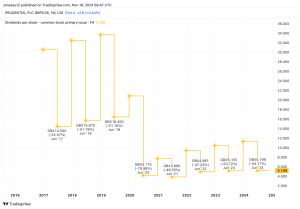Oil futures pulled back from three-month highs Friday, but remained on track for a fifth straight weekly gain, lifted by fading fears of a global economic slowdown as supply cuts by major producers take effect.
Price action
-
West Texas Intermediate crude for September delivery
CL00,
-0.06% CLU23,
-0.06%
fell 32 cents, or 0.4%, to $79.77 a barrel on the New York Mercantile Exchange, after the U.S. benchmark ended above the $80-a-barrel threshold Thursday for the first time since April. WTI is on track for a 3.5% weekly rise. -
September Brent crude
BRNU23,
-0.13% ,
the global benchmark, was off 40 cents, or 0.5%, at $83.84 a barrel on ICE Futures Europe. October Brent
BRN00,
-0.12% BRNV23,
-0.12% ,
the most actively traded contract, fell 37 cents, or 0.4%, at $83.42 a barrel, set for a 2.9% weekly gain. -
Back on Nymex, August gasoline
RBQ23,
+0.50%
fell 0.6% to $2.934 a gallon, headed for a 4.7% weekly jump. August heating oil
HOQ23,
+0.30%
shed 0.5% to $2.901 a gallon, up 5.7% for the week. -
September natural gas
NGU23,
+2.08%
declined 0.7% to $2.577 per million British thermal units, down 4.8% for the week.
Market drivers
Expectations major central banks, including the U.S. Federal Reserve and the European Central Bank, were at or near the end of an aggressive series of rate hikes have helped boost sentiment, analysts said. The Fed and ECB each delivered quarter-point rate rises this week, but indicated that future moves would depend on incoming economic data.
That’s helped soothe fears that aggressive tightening would tip the global economy into recession. Economic data out of the U.S., including a stronger-than-expected second-quarter gross domestic product reading on Thursday, also helped soothe nerves.
Oil bulls look for crude to remain supported as effects of Saudi Arabia’s voluntary cut of 1 million barrels a day of production in July and August are felt.
What may prove more important is whether Saudi Arabia intends to extend its production cut by another month until the end of September, said Carsten Fritsch, commodity strategist at Commerzbank, in a note.
“If so, the oil market would be undersupplied to an even greater extent in the third quarter, which would give further tailwind to oil prices. A sudden end to the voluntary cuts, causing production to surge by 1 million barrels per day in September, would presumably put the oil price under pressure, on the other hand,” Fritsch wrote.
Since it is in Saudi Arabia’s interest to at least keep oil prices stable near current levels, Riyadh could decide to gradually withdraw production cuts, he said.
This post was originally published on Market Watch






